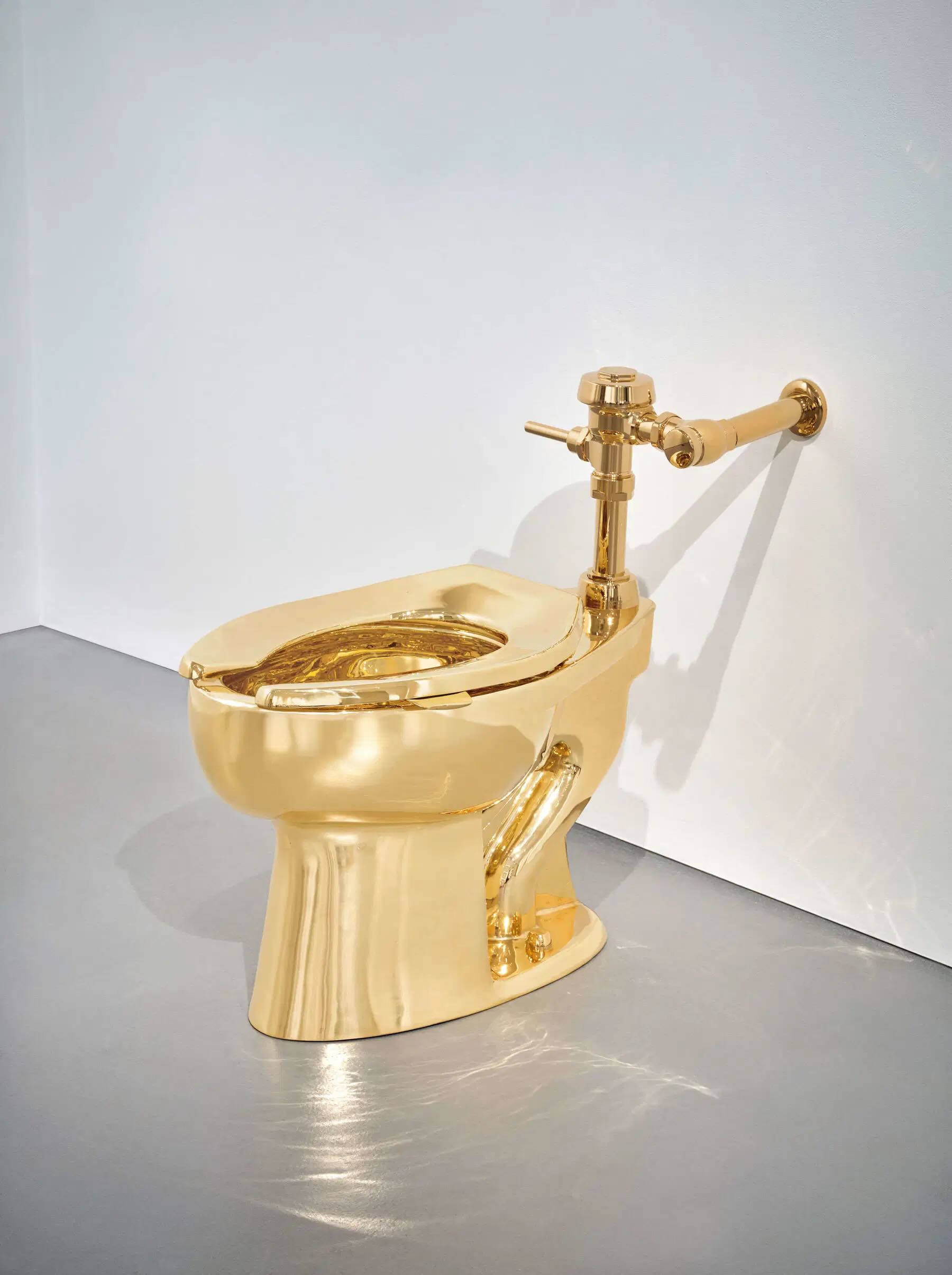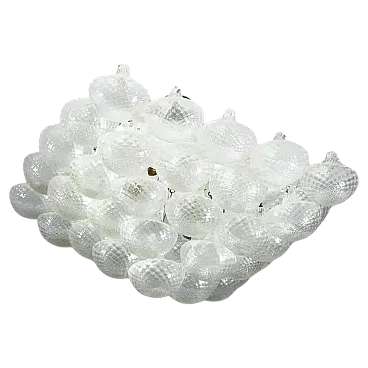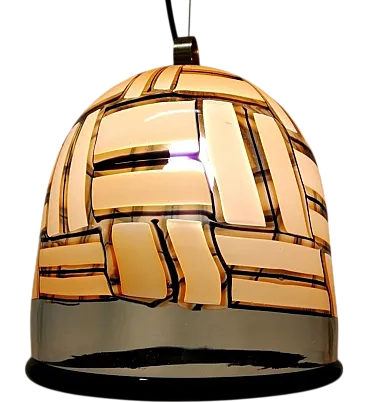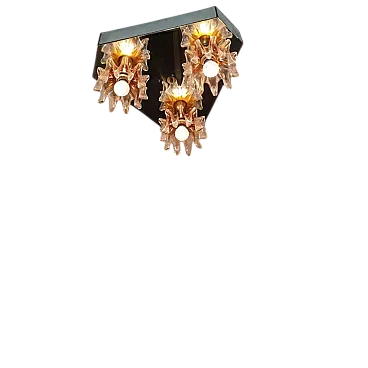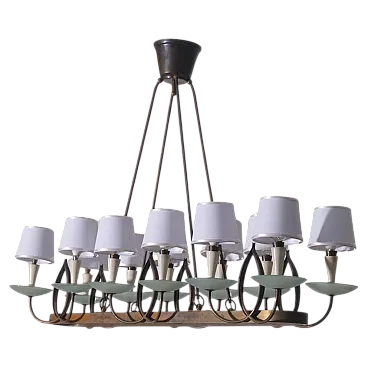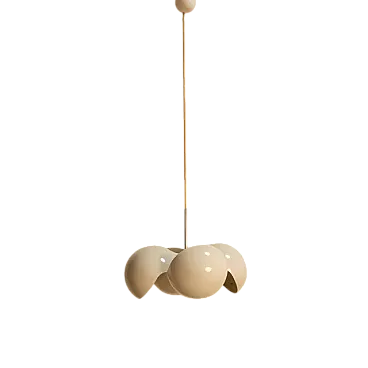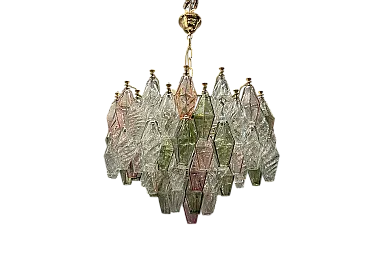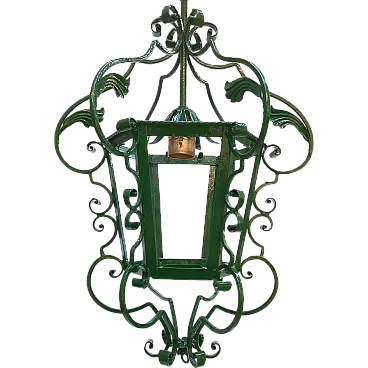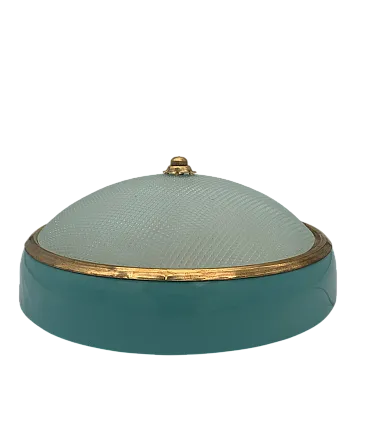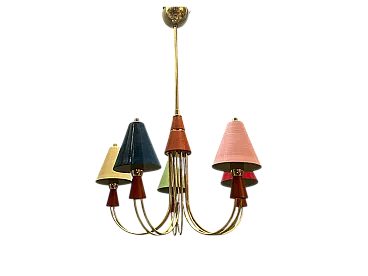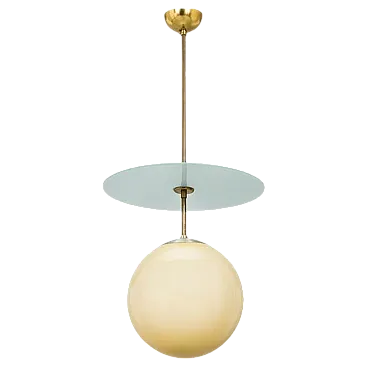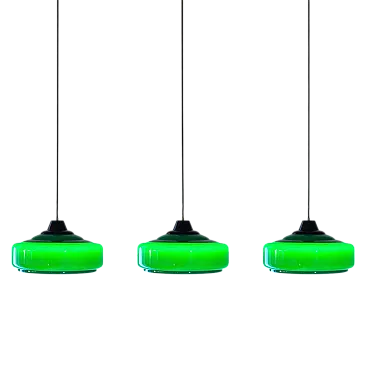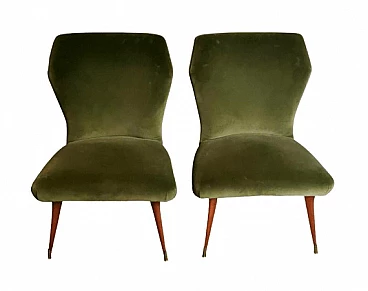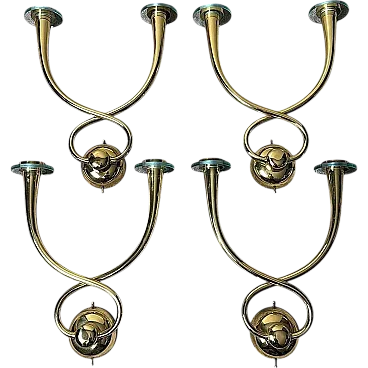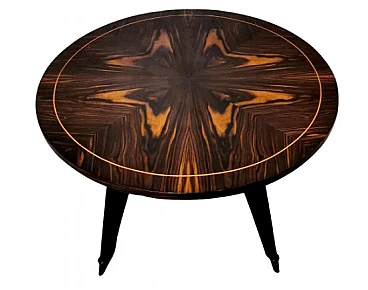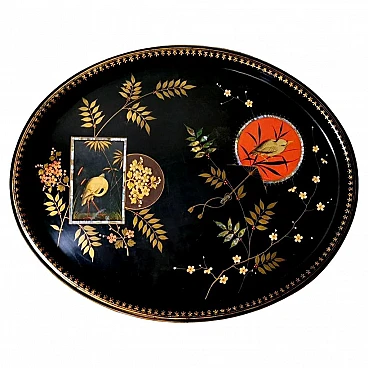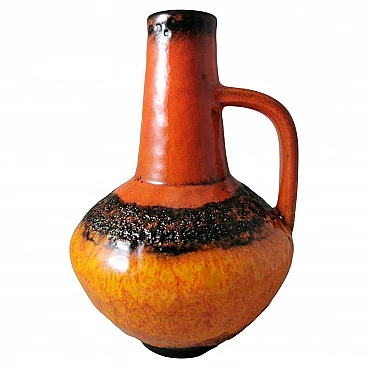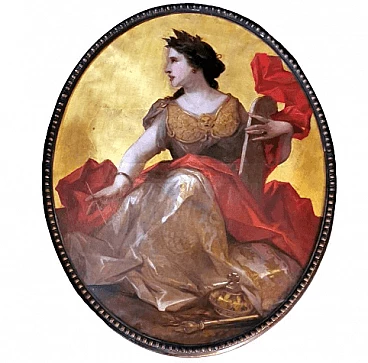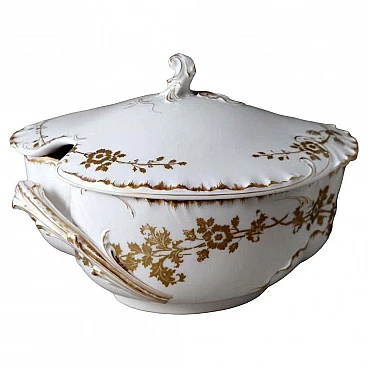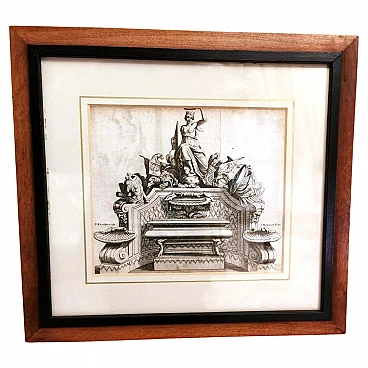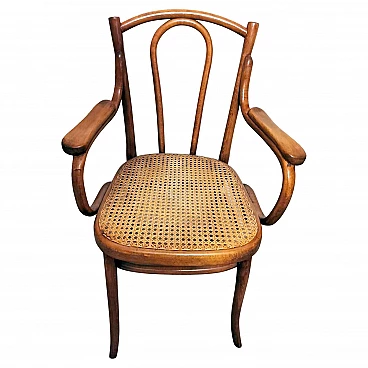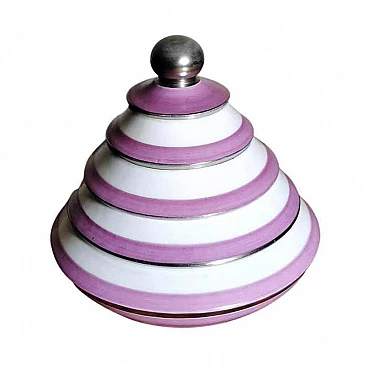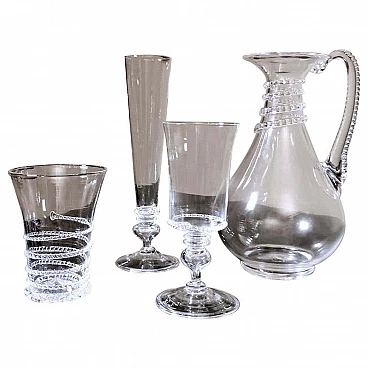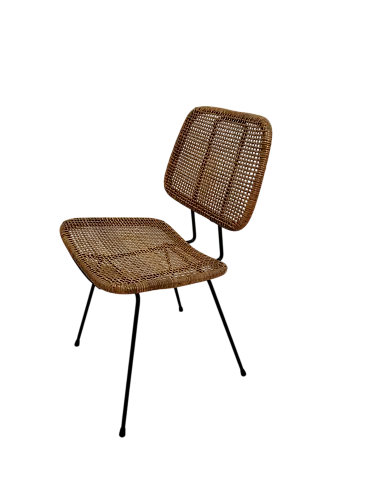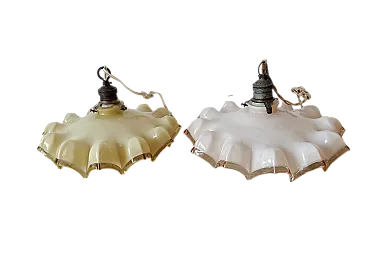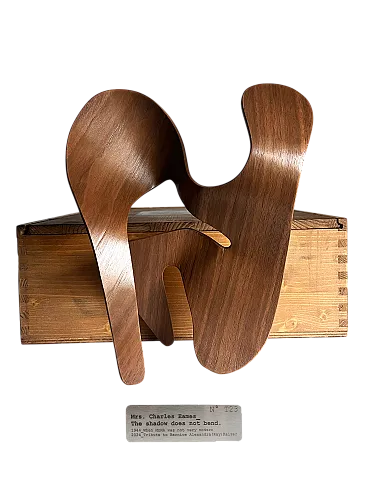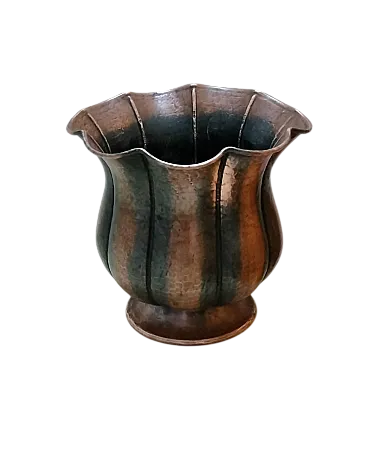An original and peculiar chandelier executed in the Space Age style; the structure is composed of a solid bar of satin-finished brass with a square cross-section from which depart four round bars arranged asymmetrically, at the ends of which are four perforated cylinders through each of which passes the electric wire that supports the glass sphere. The electric wire, which emerges from the top of the bar, passes through a cylindrical cup that conceals the ceiling connection. By adjusting the size of the wire itself, the height of the chandelier can be varied as desired, the same wire is split into four to form the light attachment of each sphere, the cups above the spheres are made of brass-coloured painted metal. A small refinement of the craftsmen constructors was to use a wire of the same colour as the structure. The spheres of the chandelier are made of shaded, mouth-blown and handcrafted milk-white glass. At the bottom they have a beautiful and characteristic hollow pattern whose centre in two spheres is bright orange, in the other two it has a different pattern and is lighter orange. When illuminated, the shaded lattimo glass is expressed in all its particular beauty, and wonderful golden reflections emanate from the workmanship of the lower part; they were created by master glassmakers in a Murano furnace. We can attribute the chandelier with good certainty to the Mazzega company of Murano, which often used this type of combination of colours and materials in its enchanting works. The chandelier was made between 1965 and 1970 in Murano, Italy. The style of the lamp is the 'Space Age', an aesthetic current born at the dawn of the space age, commonly attributed to the launch of Sputnik in October 1957. Space Age design captured the optimism and belief in technology by society in the 1950s and 1960s. The spherical shape predominates in this style for most of the decoration and lighting where, often, if several spheres are connected to each other, they are explicitly reminiscent of the atom. The design explodes in a variety of styles and movements, giving space to roundness, freedom of form and movement, lightness and simplicity. The Mazzega company was founded in Murano in 1946 and began a production of the highest level, destined for a high and demanding market; between the 1950s and 1970s it was the author of a profound artistic and conceptual renewal in the field of Murano art glass. Collaboration with the elite of the 20th century European art world dates back to that period: from Marc Chagall to Pablo Picasso, from Giò Ponti to George Braque and Jean Cocteau, from Fulvio Bianconi to Carlo Scarpa. From that time to the present day, the glassworks hosts in its prestigious collections the best of what is produced in Murano, whose works embellish elegant settings all over the world. Lattimo, whose name derives from the word 'milk', is an opaque white glass, the invention of which dates back to around 1450 in Murano with the aim of imitating the Chinese porcelain that arrived in Venice, using lead lime and tin as opacifiers. These crystals are the more homogenous the higher the concentration of zinc oxide in the mixture. This type of glass is widely used in Murano, in giftware but especially in lighting for its ability to diffuse light softly and evenly. Dimensions width 45 cm, depth 45 cm, height 111 cm (variable). The chandelier is in good condition. The electrical system is working but the wiring is European, voltage compatibility in other countries should always be checked by an electrician before use. For all our shipments we use special packaging materials (wooden crates, polystyrene, etc.) for maximum protection and safety of the items.
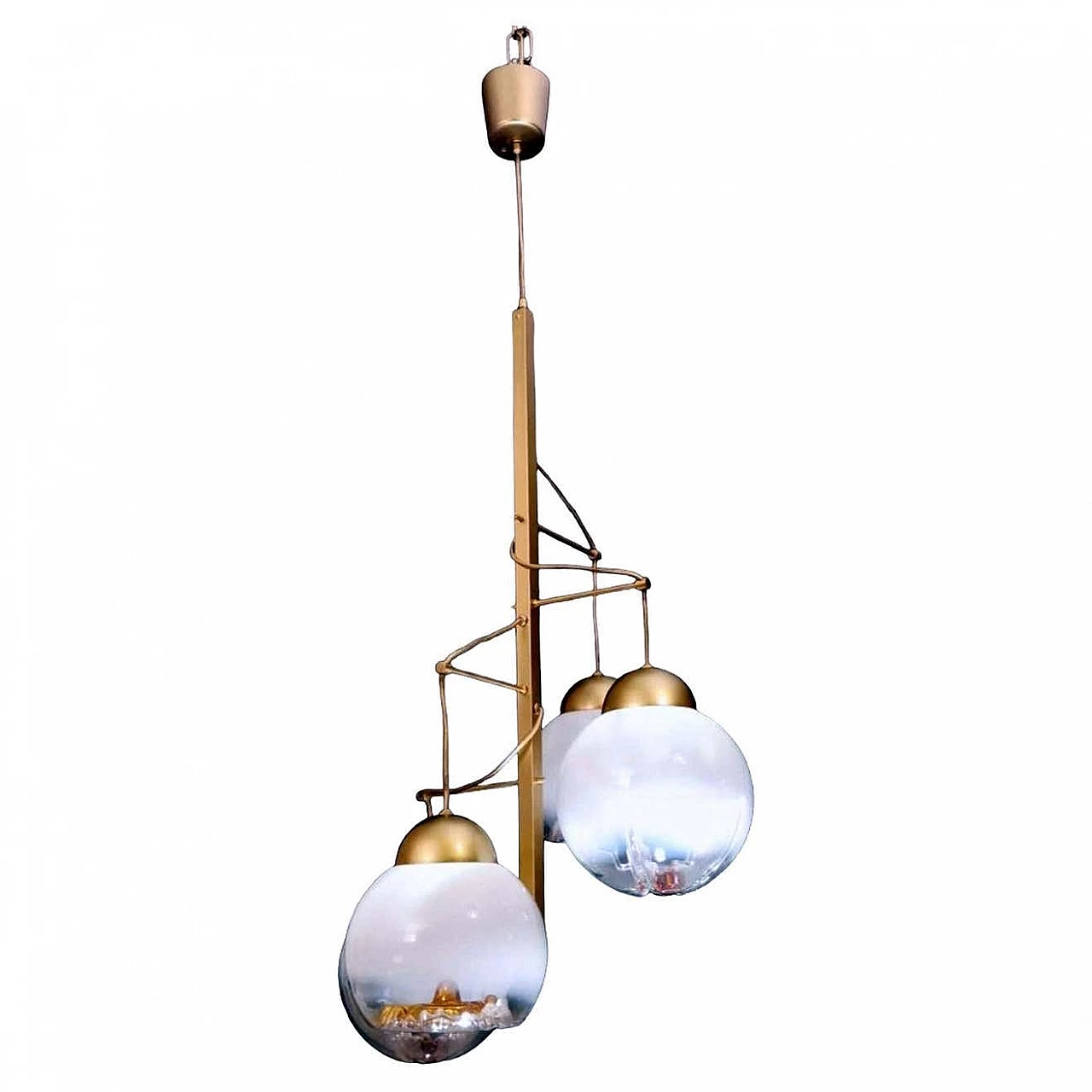
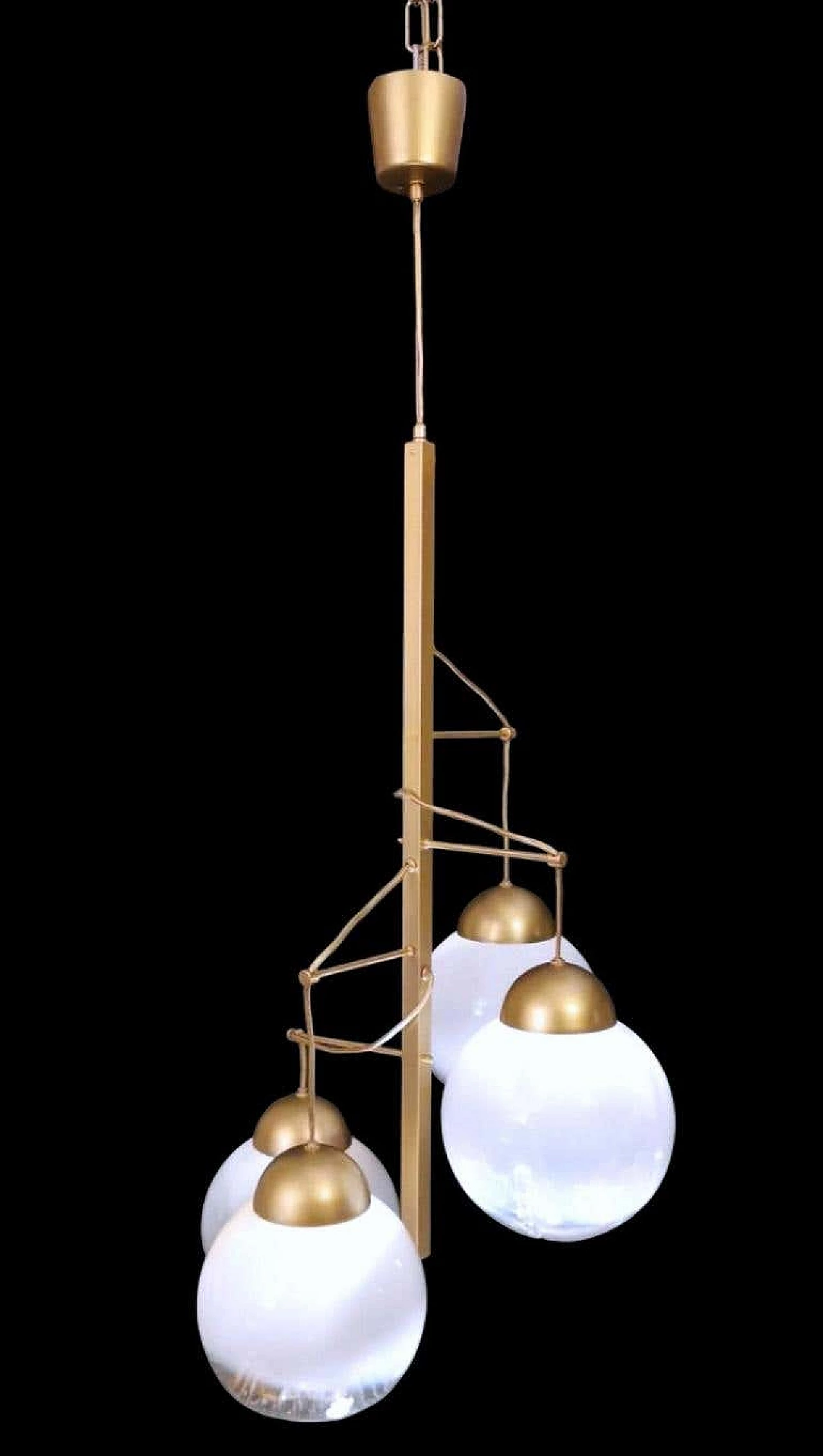
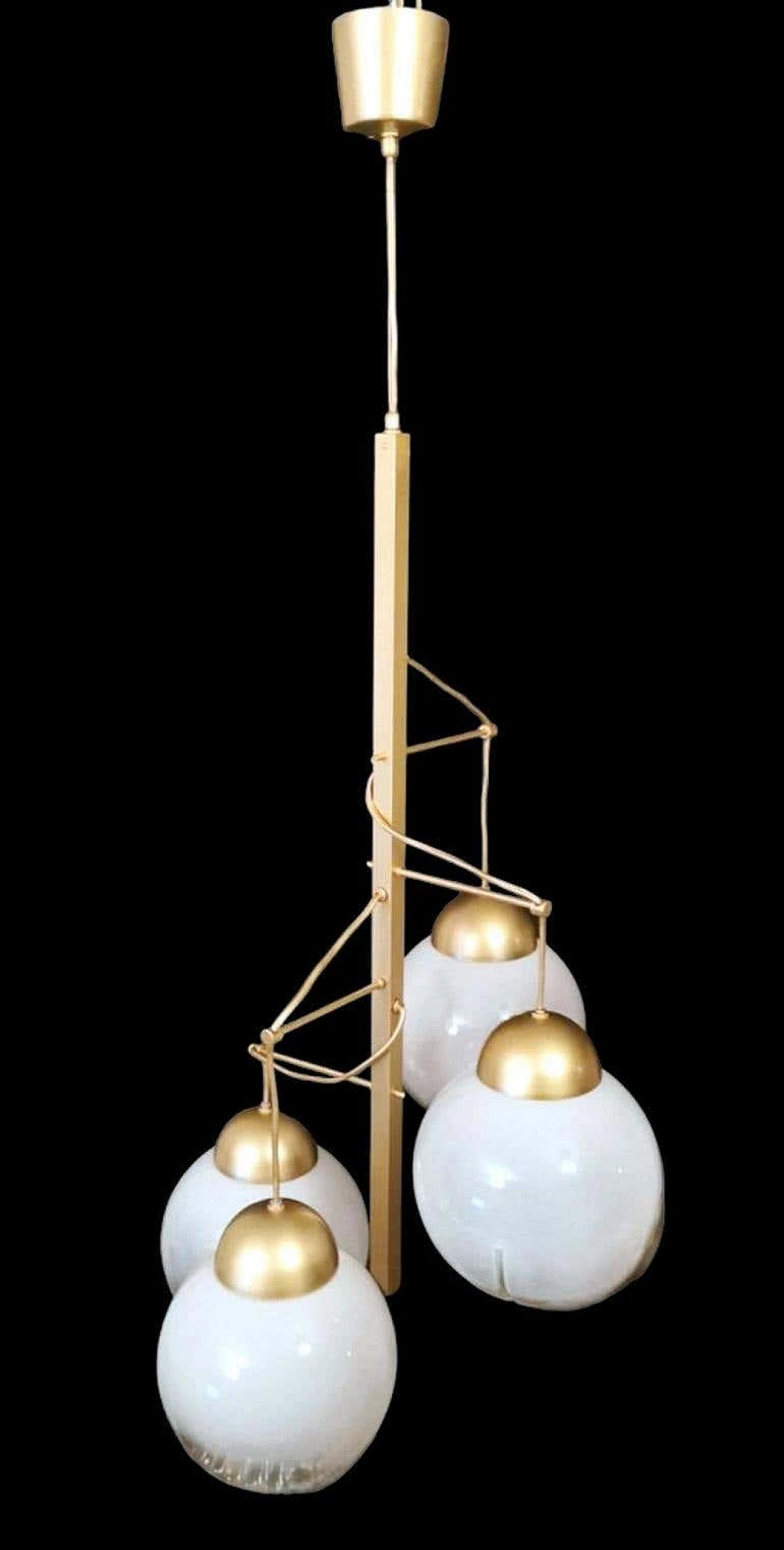
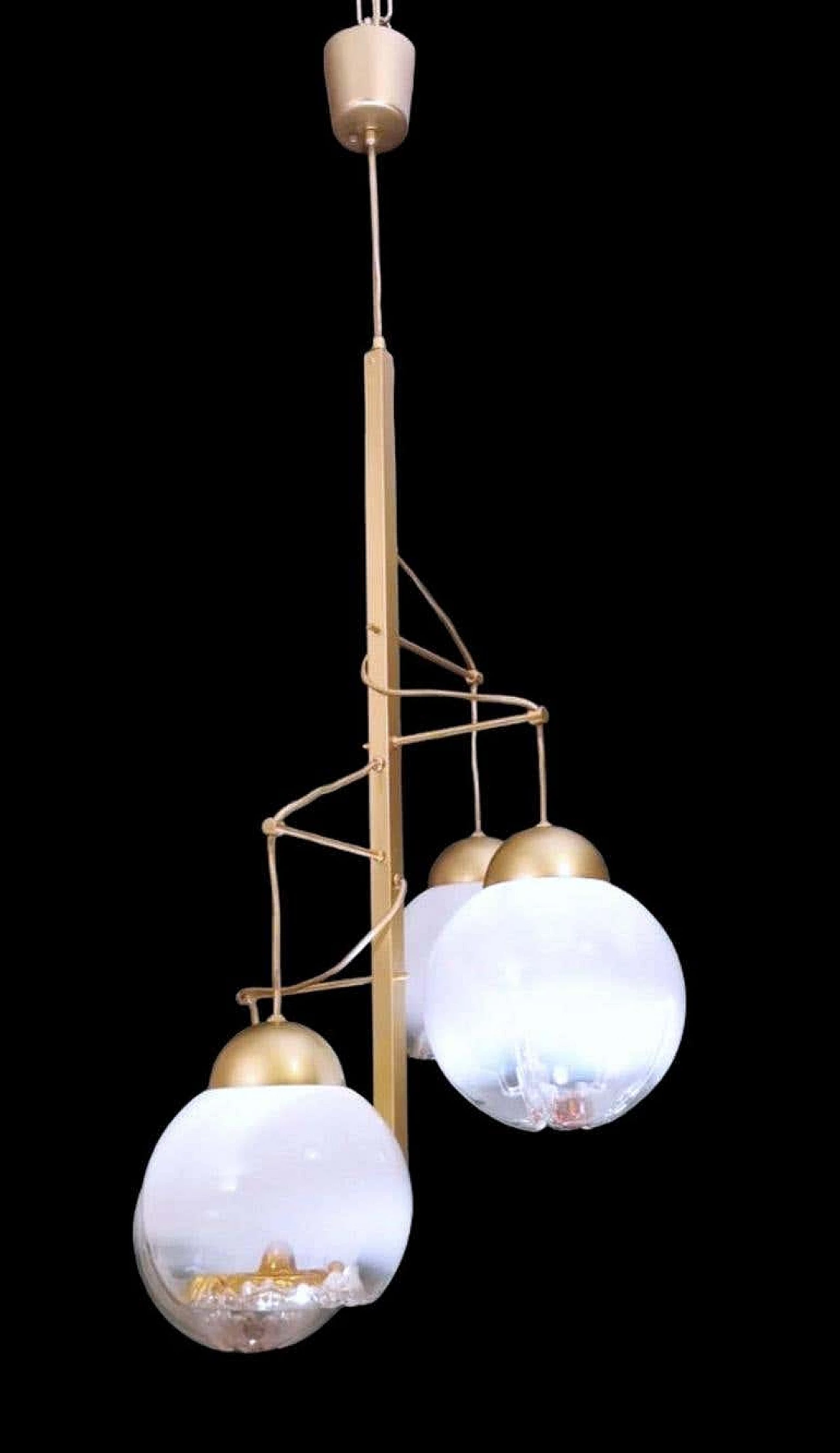
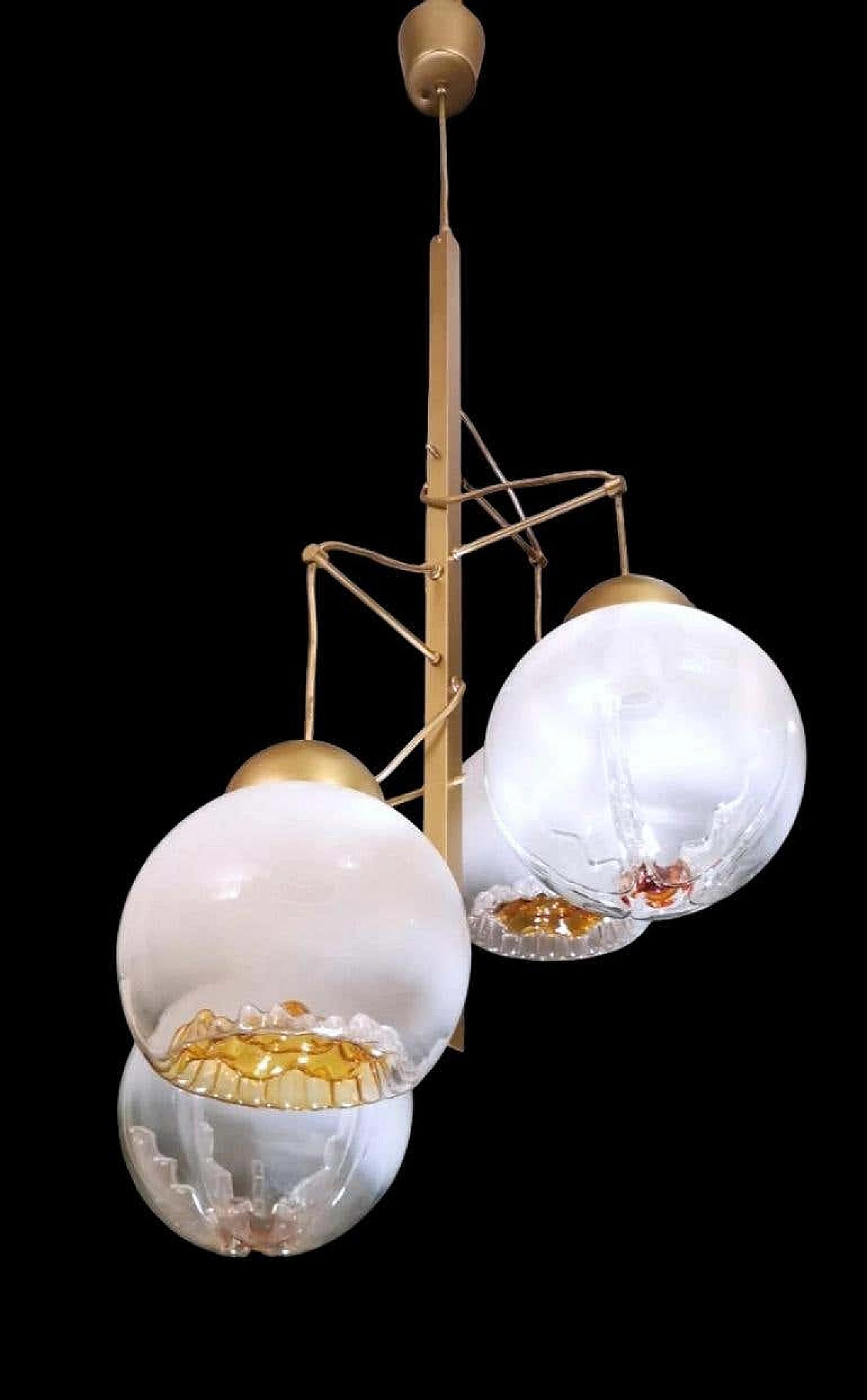
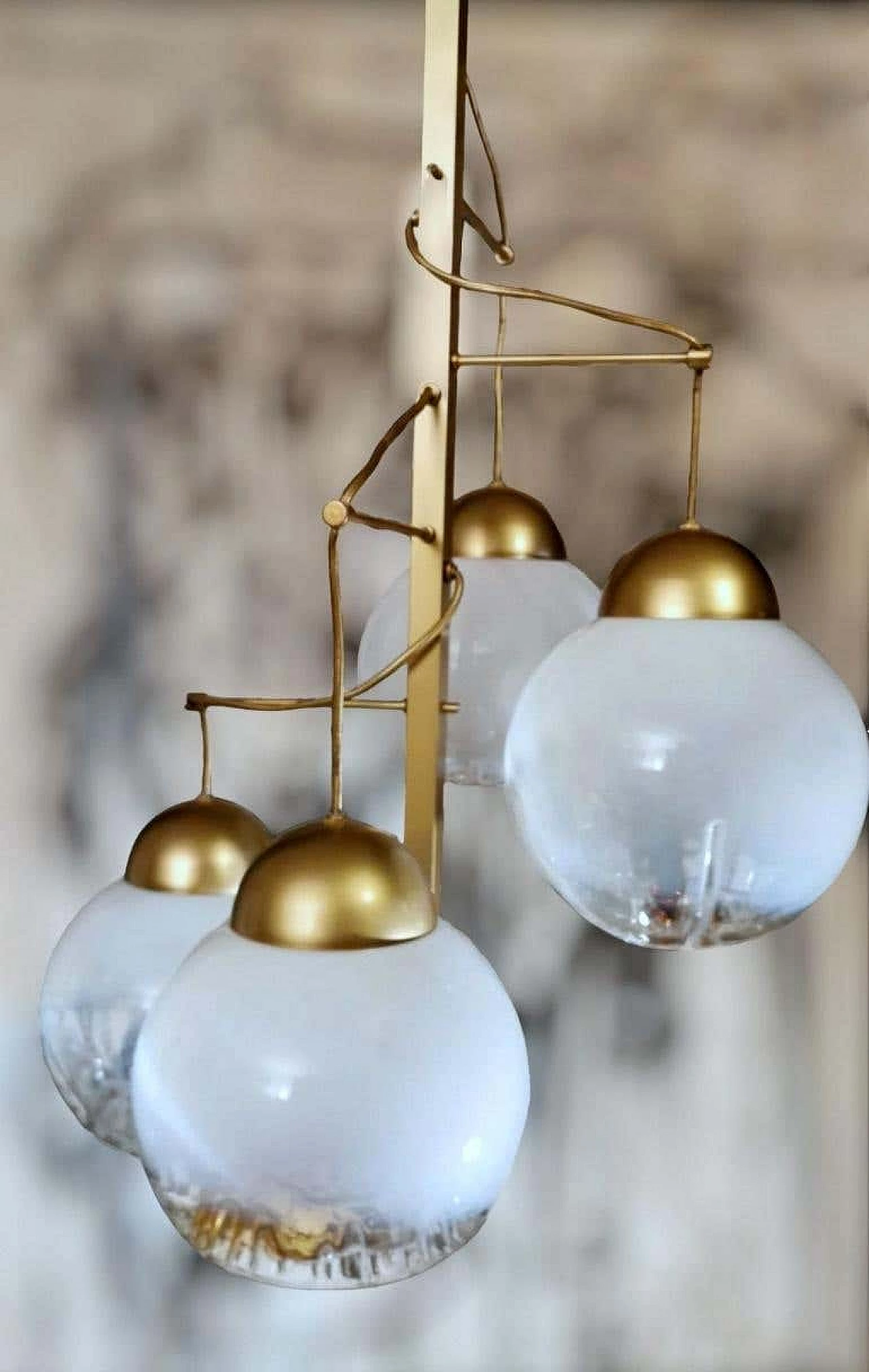
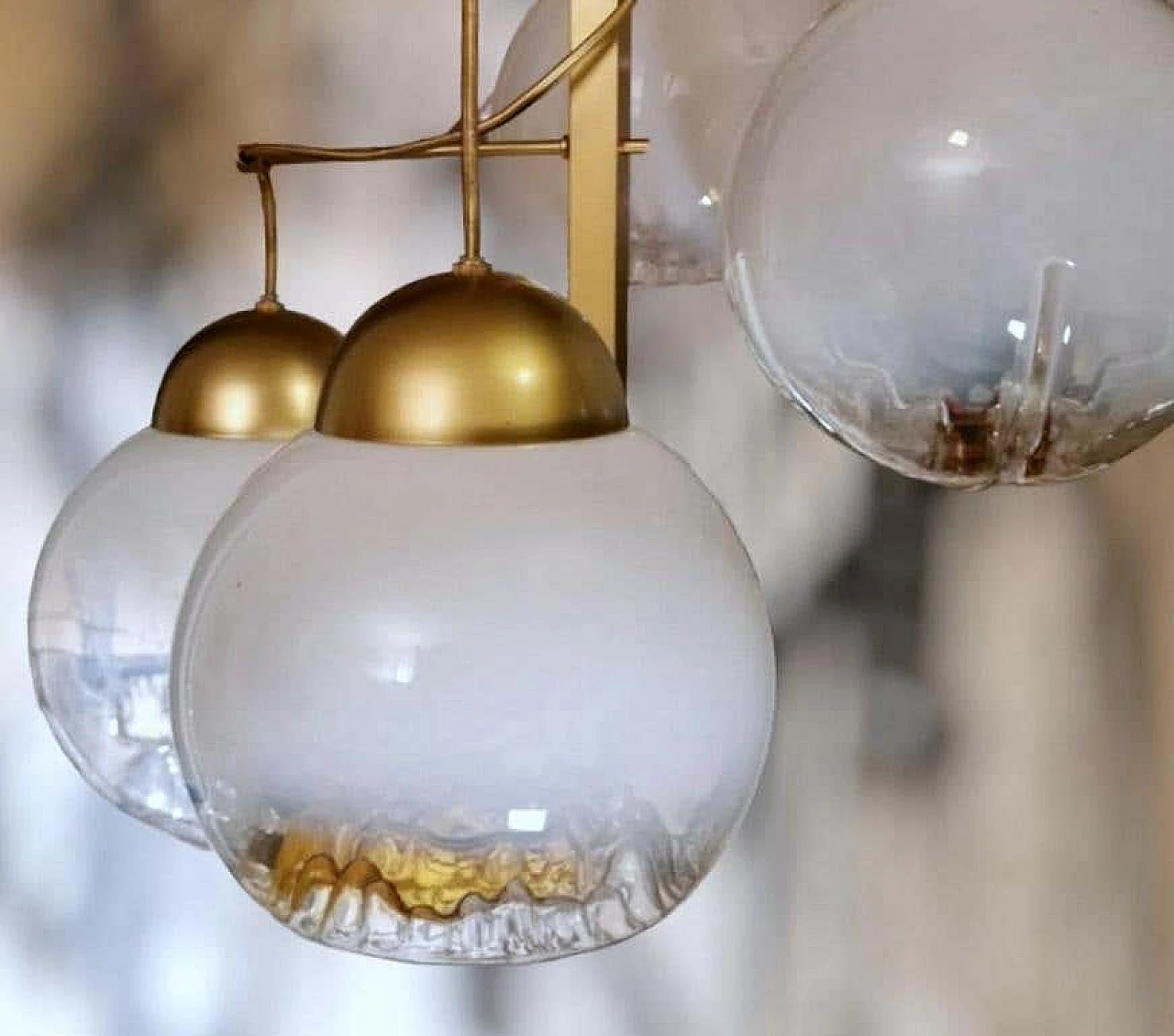
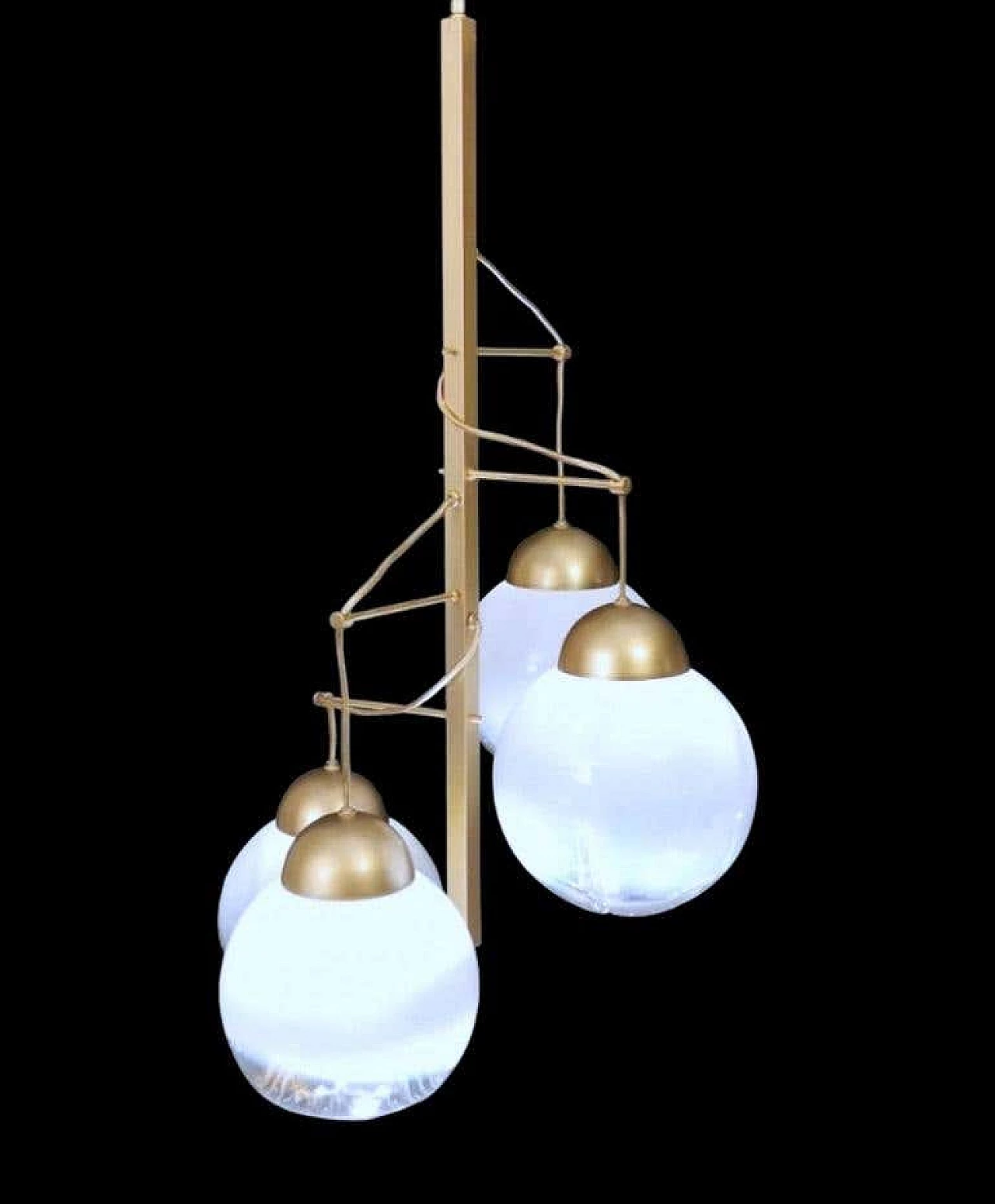
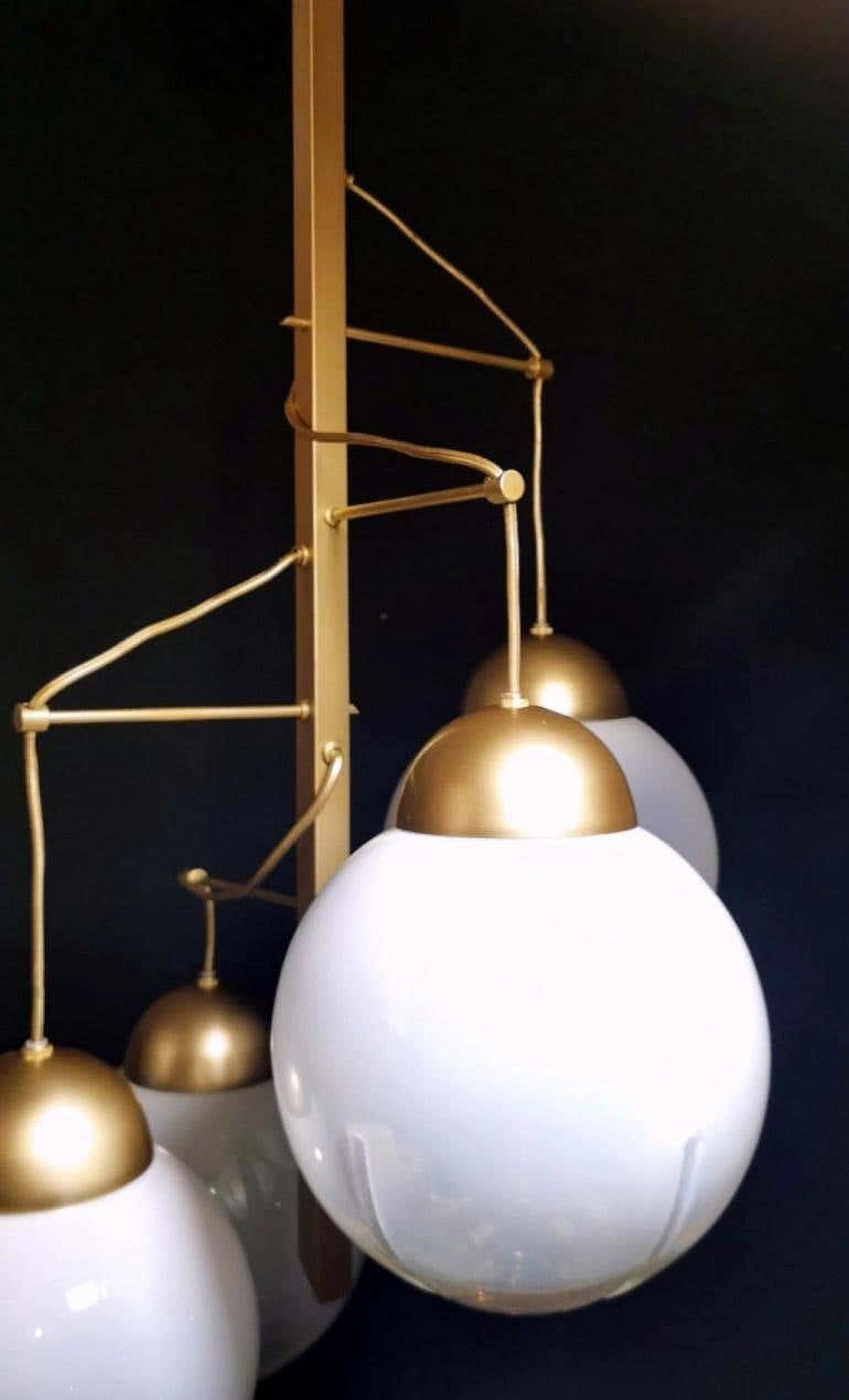
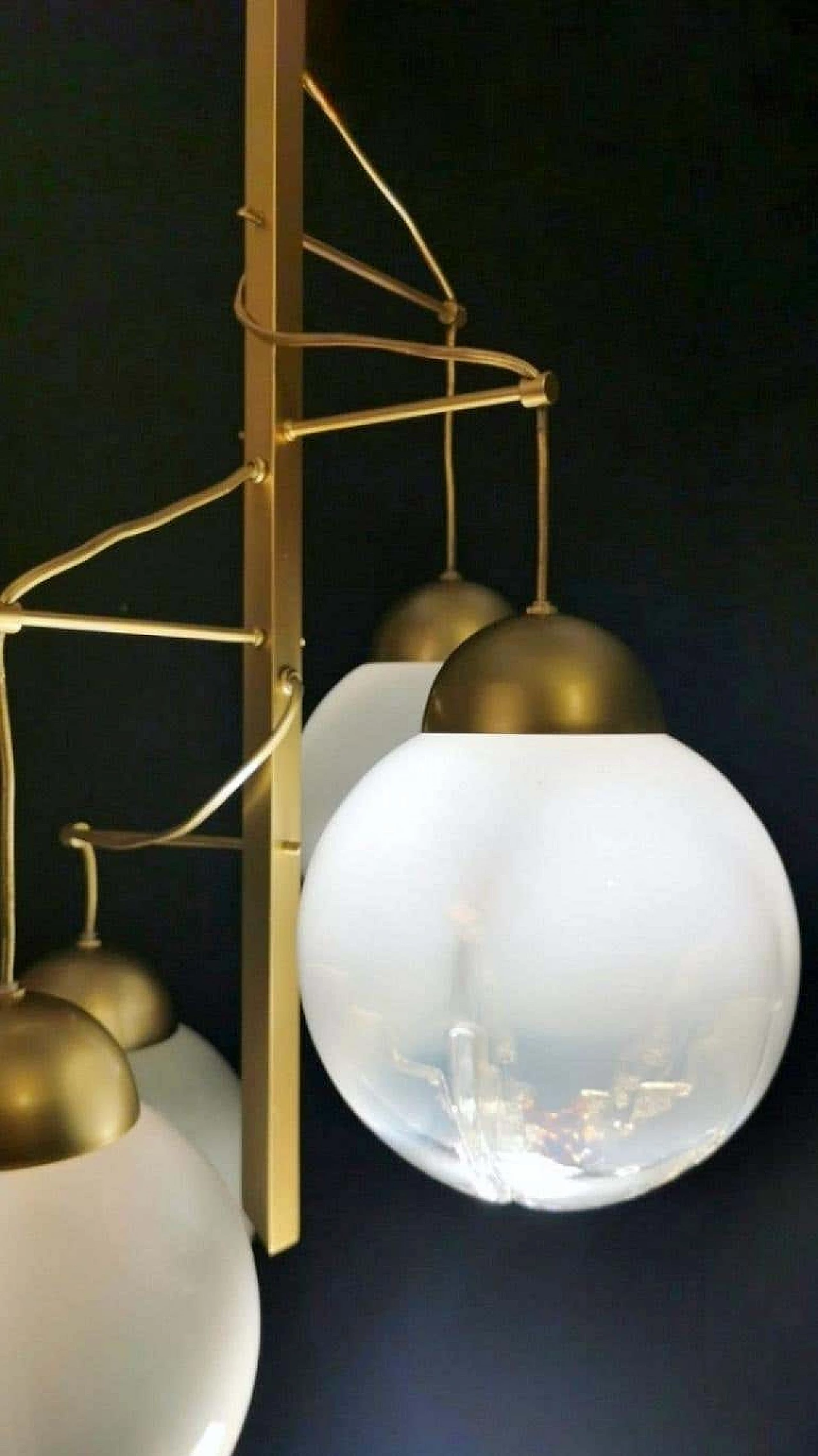
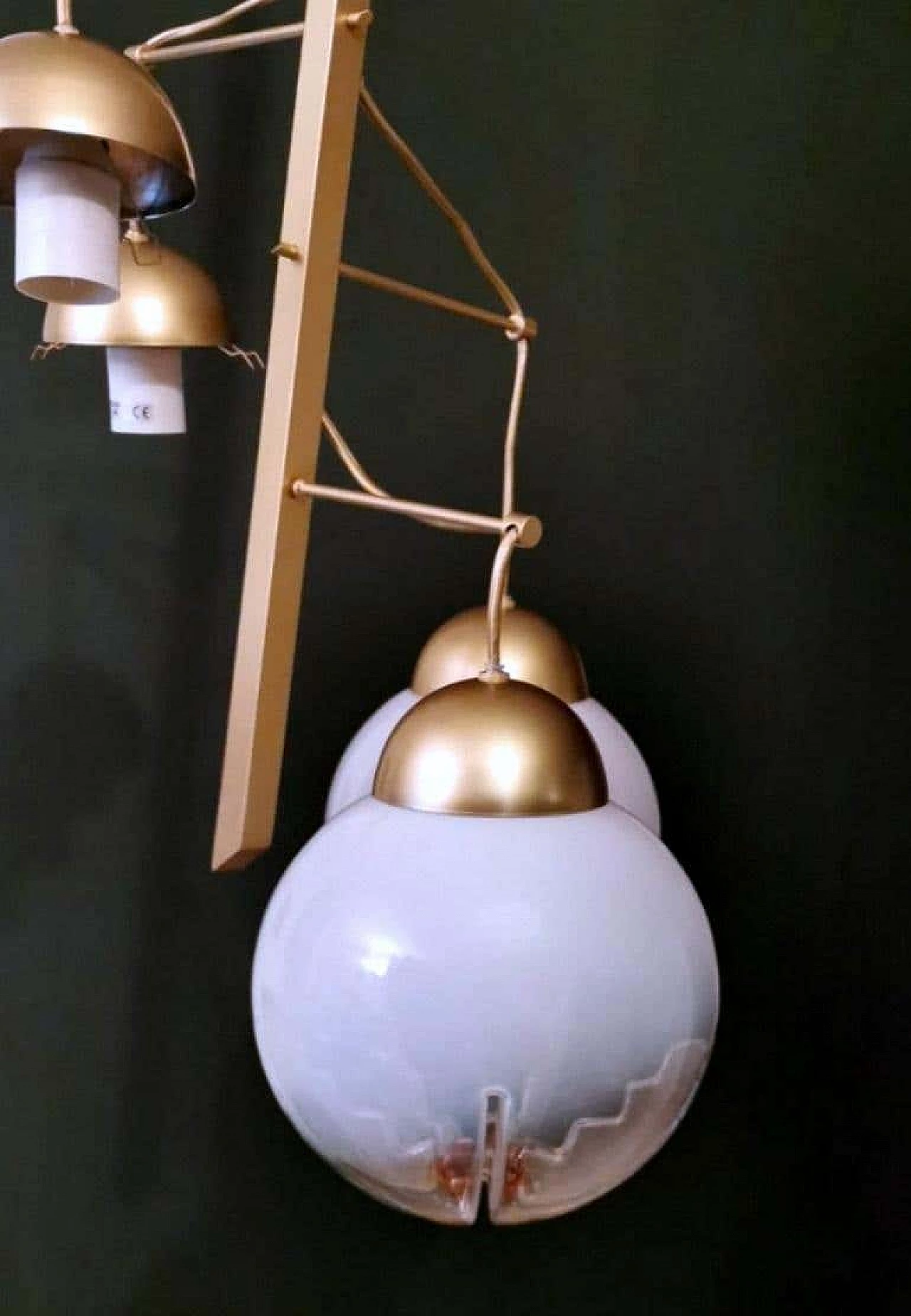
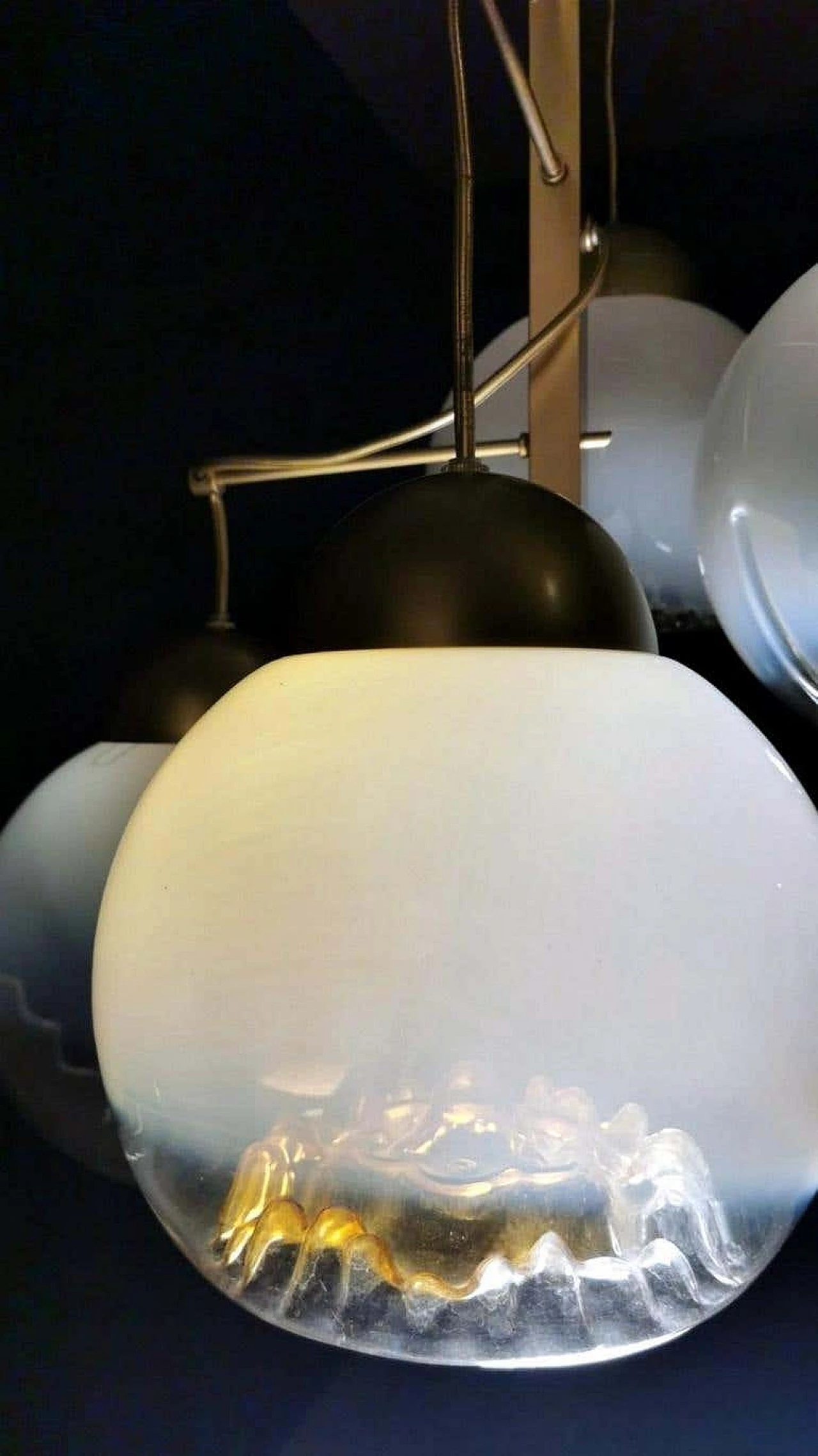
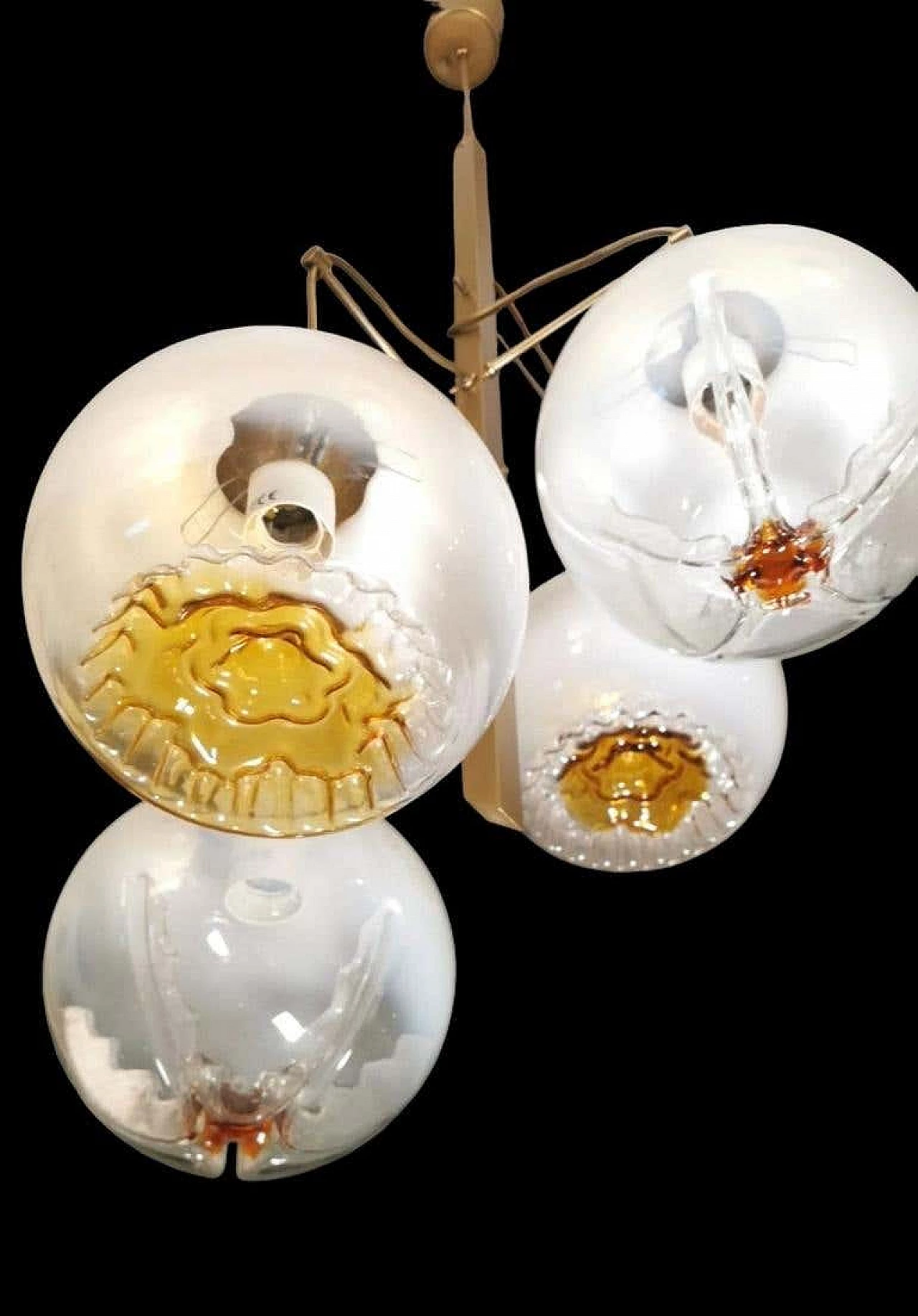
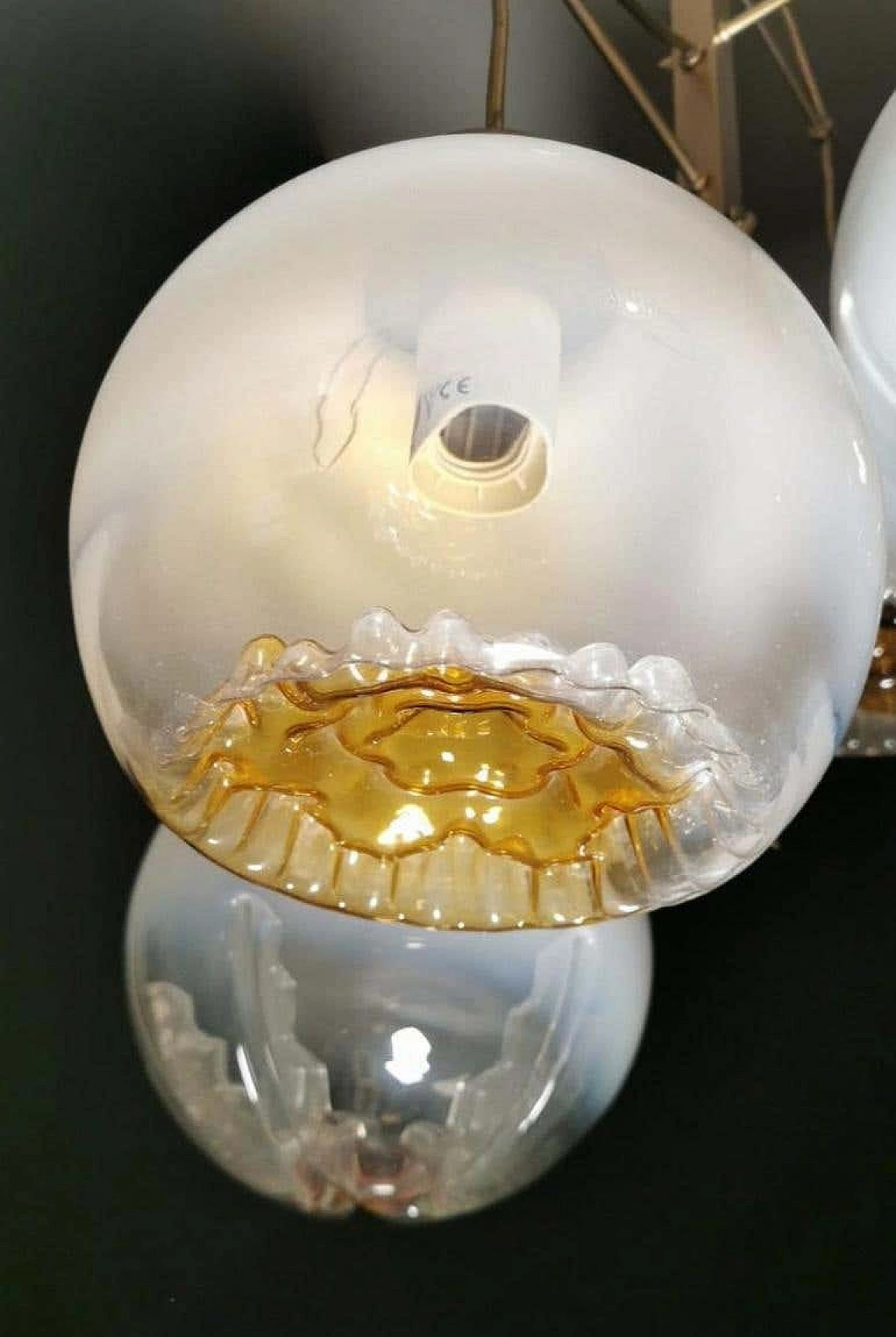
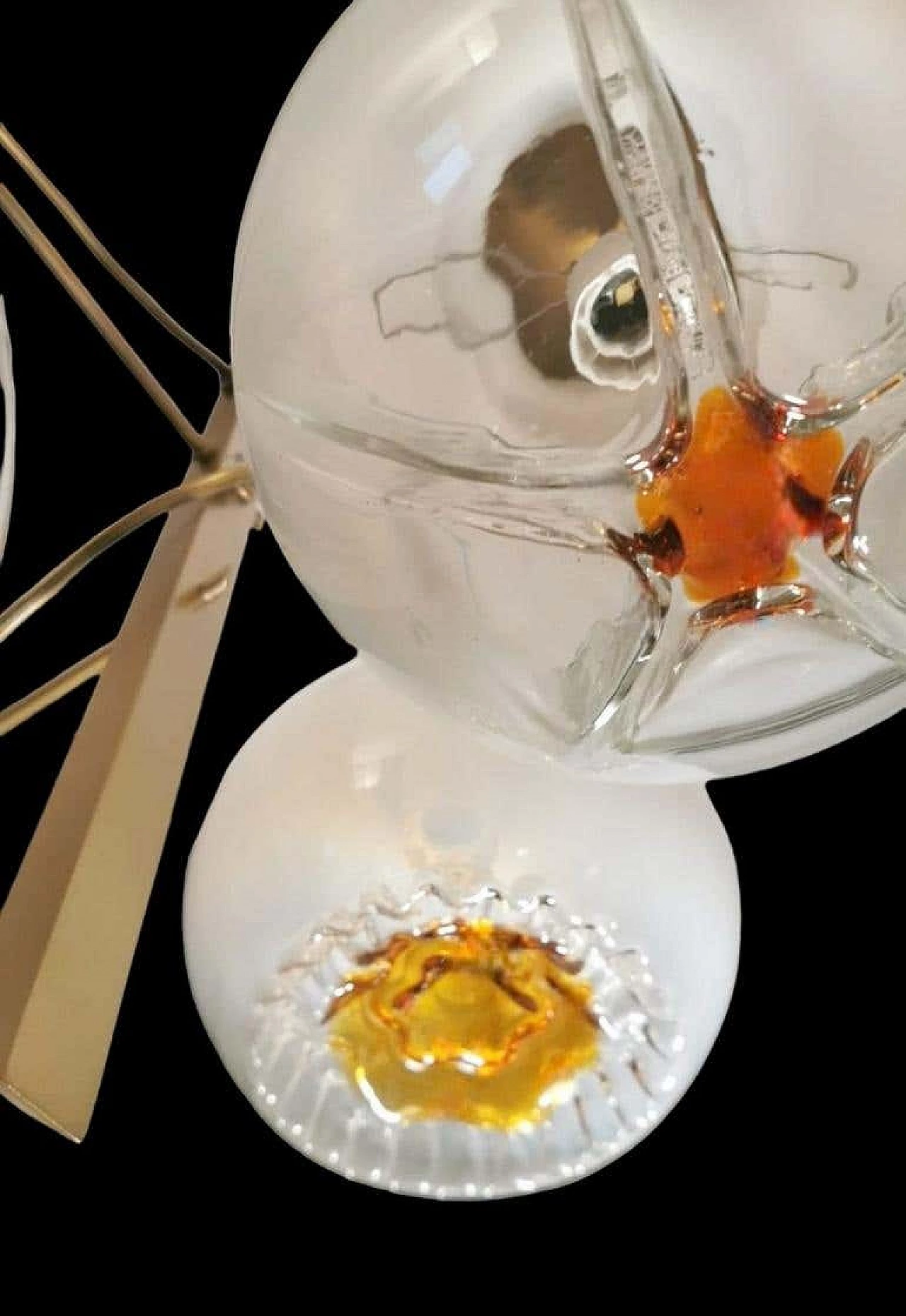
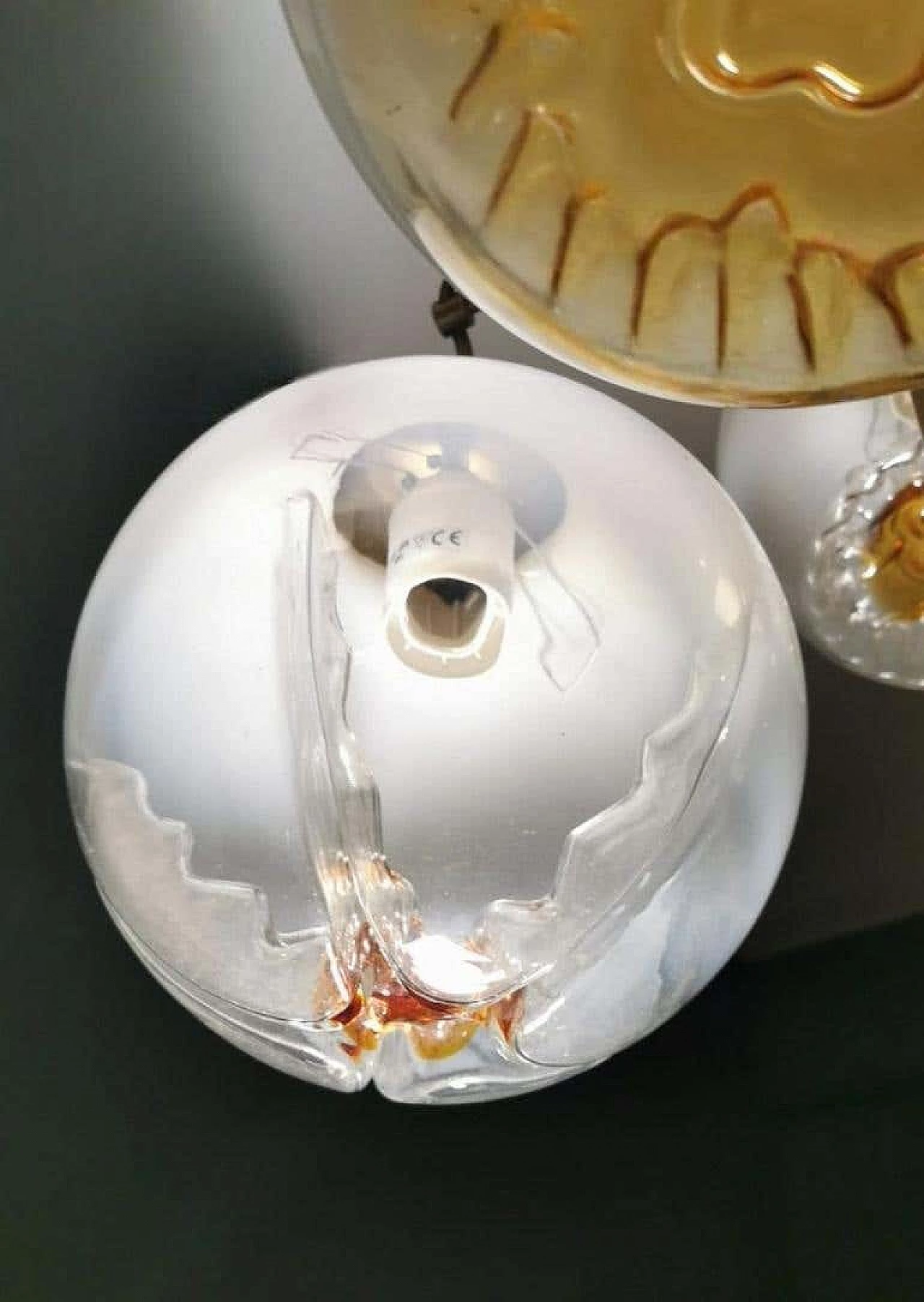
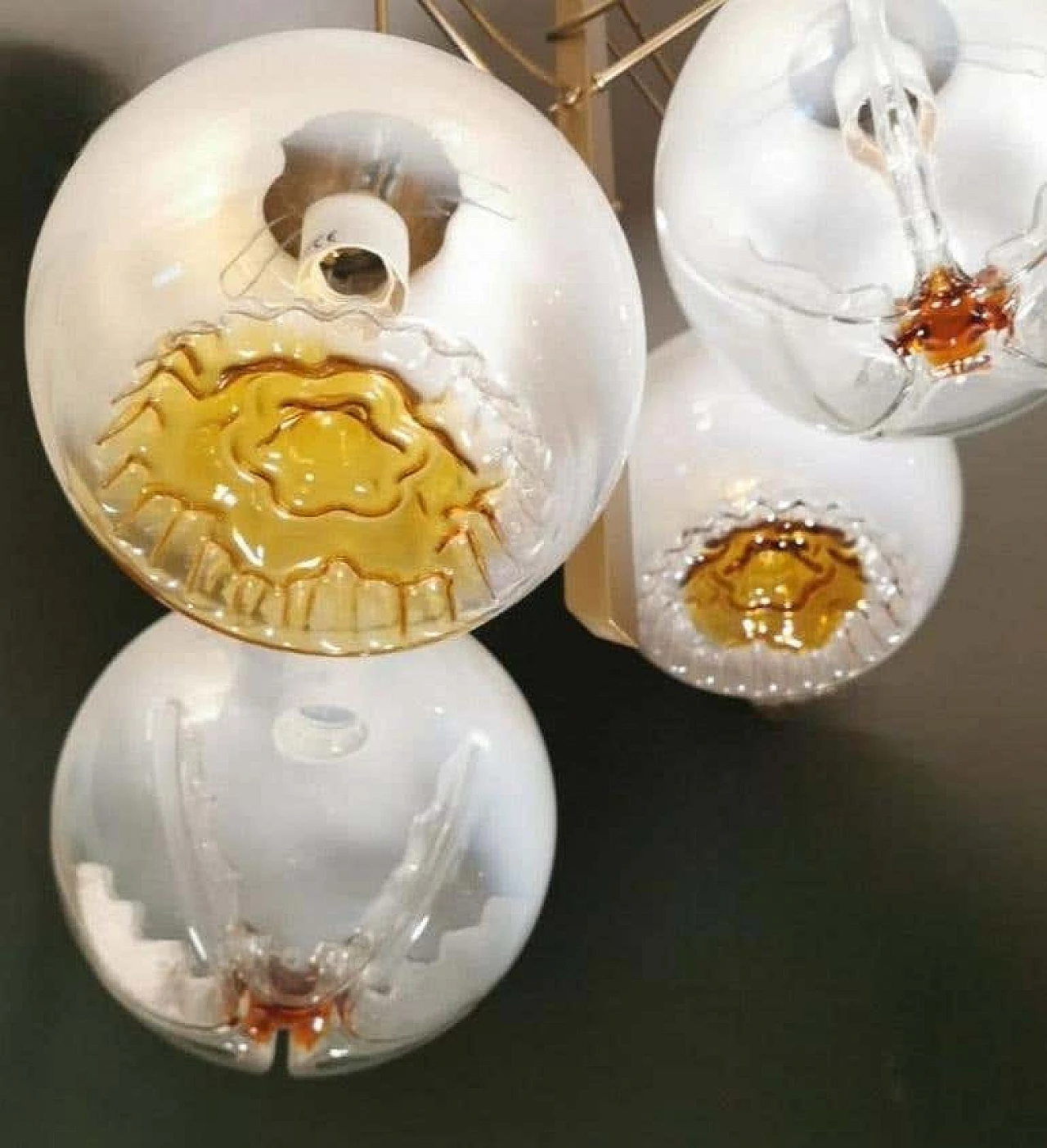
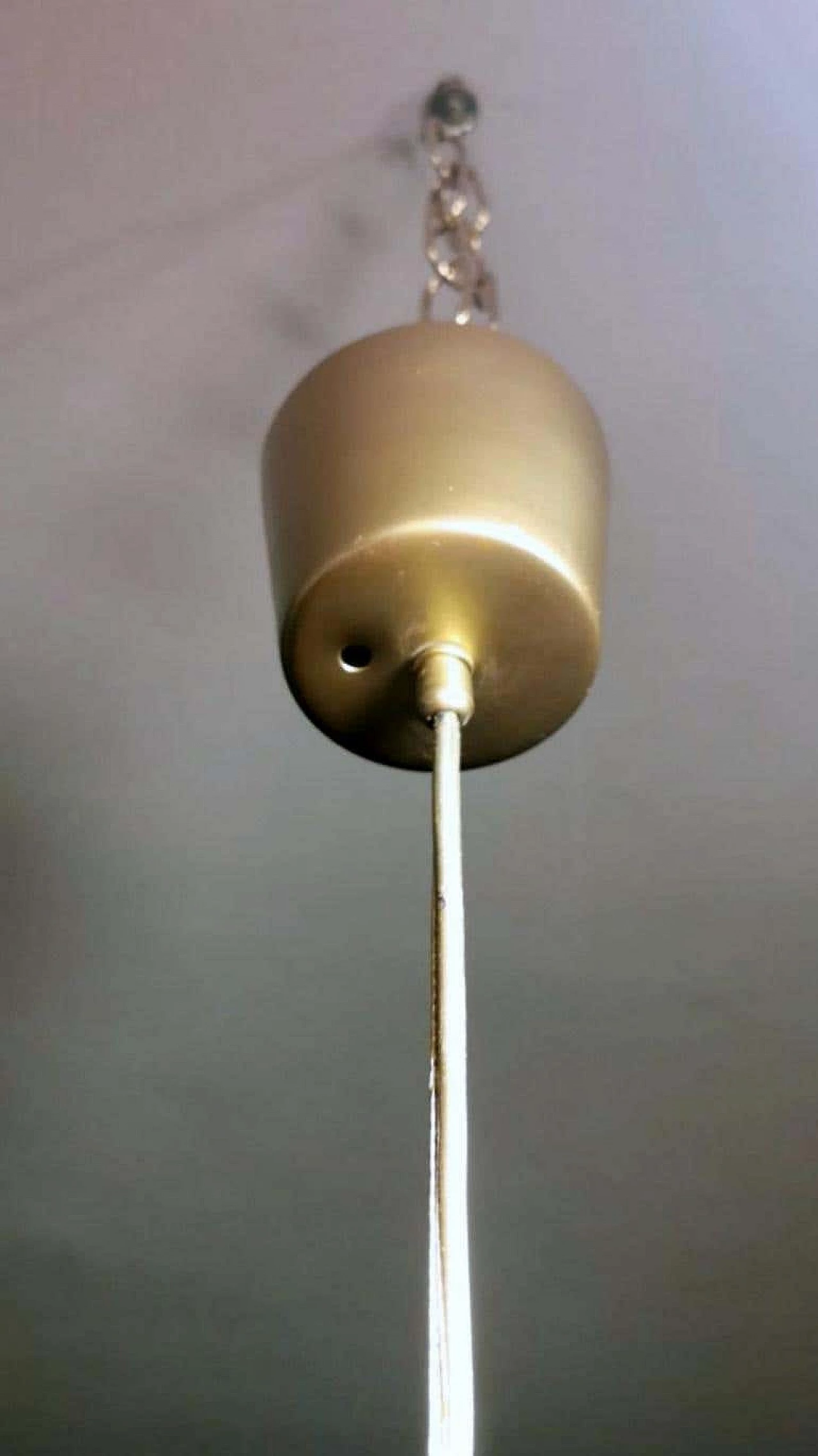
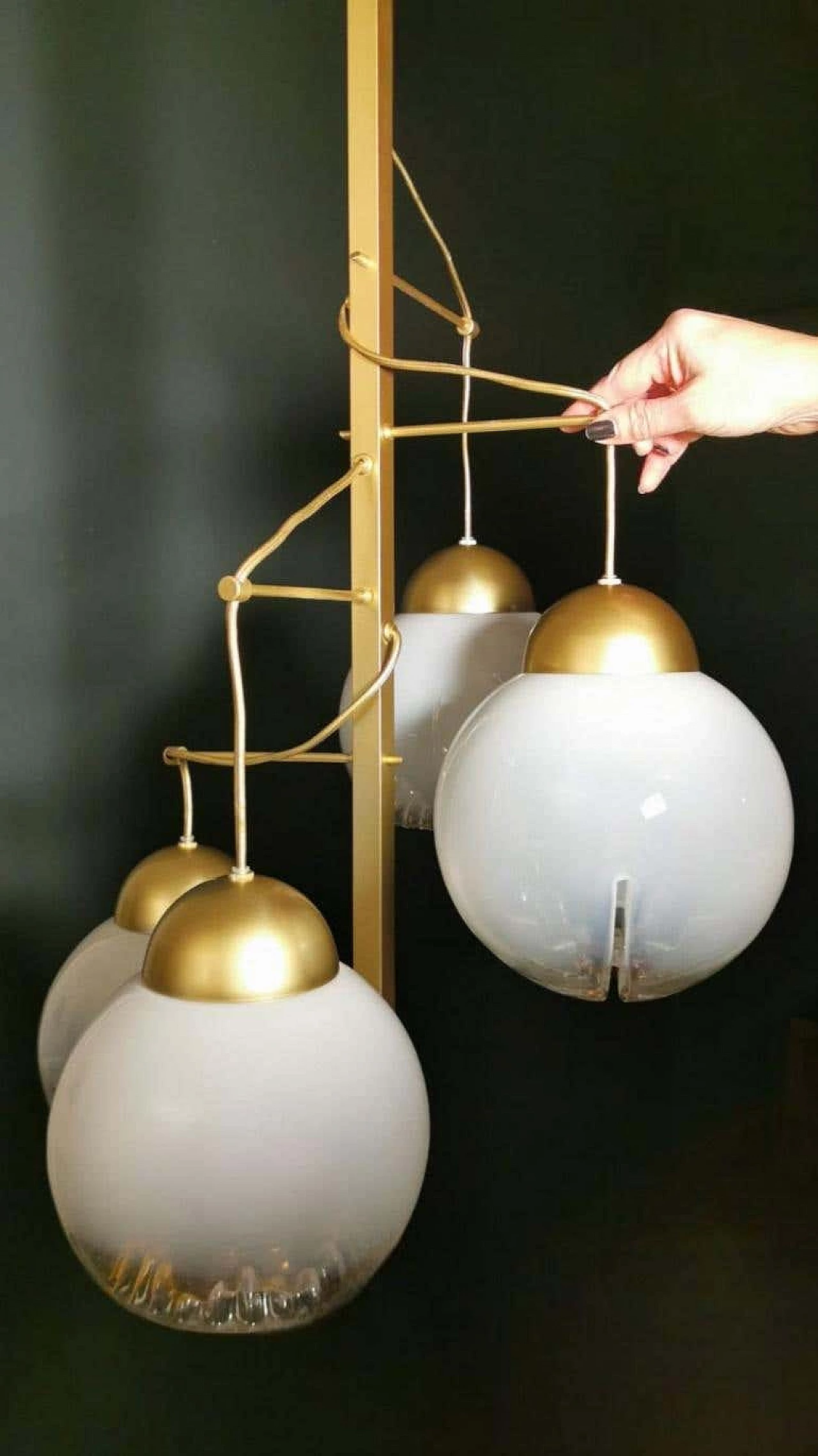
 SILVER Seller in Prato, Italy
SILVER Seller in Prato, Italy






.png)




